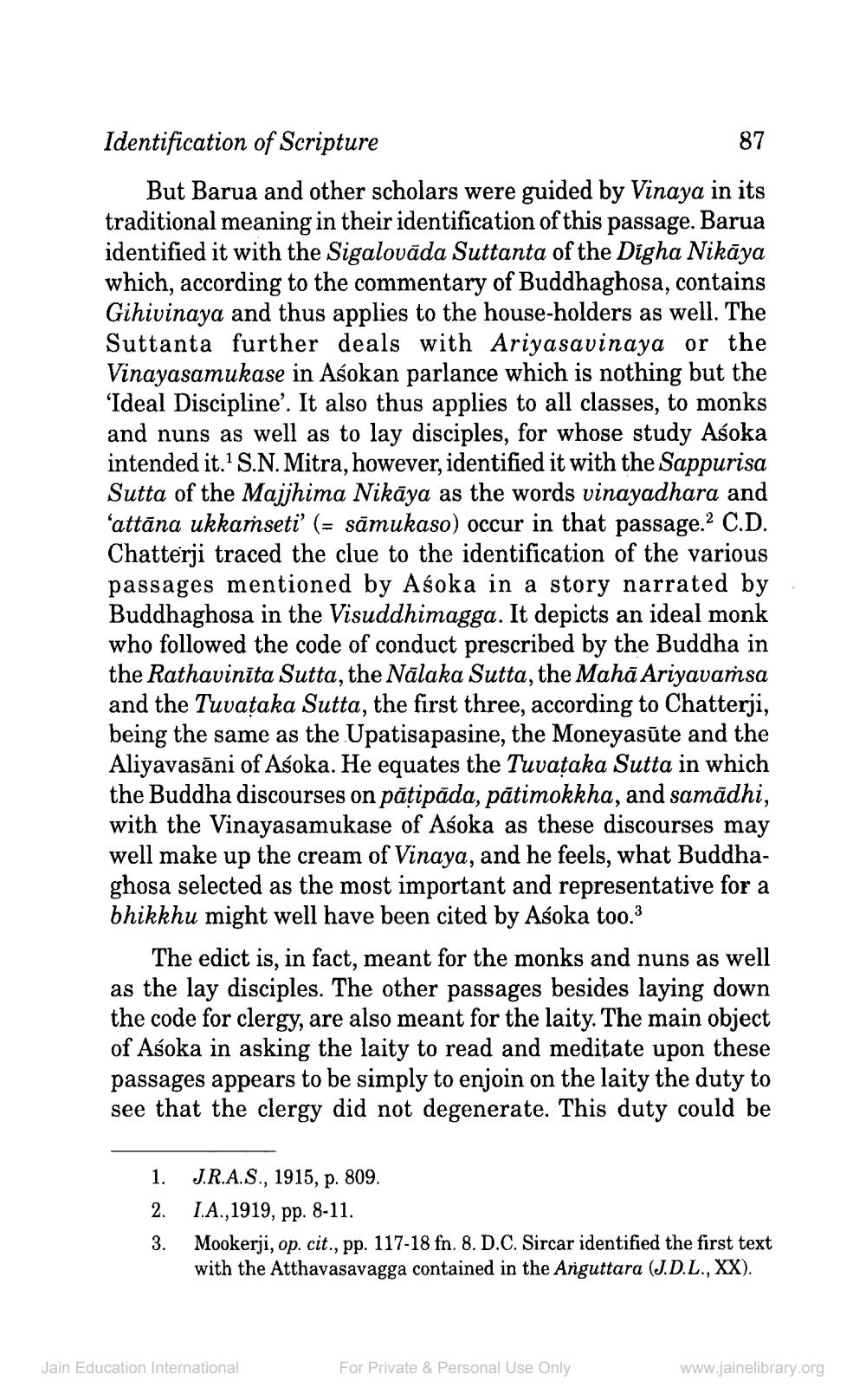________________
Identification of Scripture
87 But Barua and other scholars were guided by Vinaya in its traditional meaning in their identification of this passage. Barua identified it with the Sigalovāda Suttanta of the Digha Nikāya which, according to the commentary of Buddhaghosa, contains Gihivinaya and thus applies to the house-holders as well. The Suttanta further deals with Ariyasavinaya or the Vinayasamukase in Asokan parlance which is nothing but the 'Ideal Discipline'. It also thus applies to all classes, to monks and nuns as well as to lay disciples, for whose study Asoka intended it.' S.N. Mitra, however, identified it with the Sappurisa Sutta of the Majjhima Nikāya as the words vinayadhara and 'attāna ukkasseti' (= sämukaso) occur in that passage.? C.D. Chatterji traced the clue to the identification of the various passages mentioned by Aśoka in a story narrated by Buddhaghosa in the Visuddhimagga. It depicts an ideal monk who followed the code of conduct prescribed by the Buddha in the Rathavinīta Sutta, the Nalaka Sutta, the Mahā Ariyavaṁsa and the Tuvațaka Sutta, the first three, according to Chatterji, being the same as the Upatisapasine, the Moneyasūte and the Aliyavasāni of Asoka. He equates the Tuvataka Sutta in which the Buddha discourses on pāțipăda, pātimokkha, and samādhi, with the Vinayasamukase of Asoka as these discourses may well make up the cream of Vinaya, and he feels, what Buddhaghosa selected as the most important and representative for a bhikkhu might well have been cited by Asoka too.3
The edict is, in fact, meant for the monks and nuns as well as the lay disciples. The other passages besides laying down the code for clergy, are also meant for the laity. The main object of Asoka in asking the laity to read and meditate upon these passages appears to be simply to enjoin on the laity the duty to see that the clergy did not degenerate. This duty could be
1. 2.
J.R.A.S., 1915, p. 809. 1.A.,1919, pp. 8-11. Mookerji, op. cit., pp. 117-18 fn. 8. D.C. Sircar identified the first text with the Atthavasavagga contained in the Anguttara (J.D.L., XX).
Jain Education International
For Private & Personal Use Only
www.jainelibrary.org




